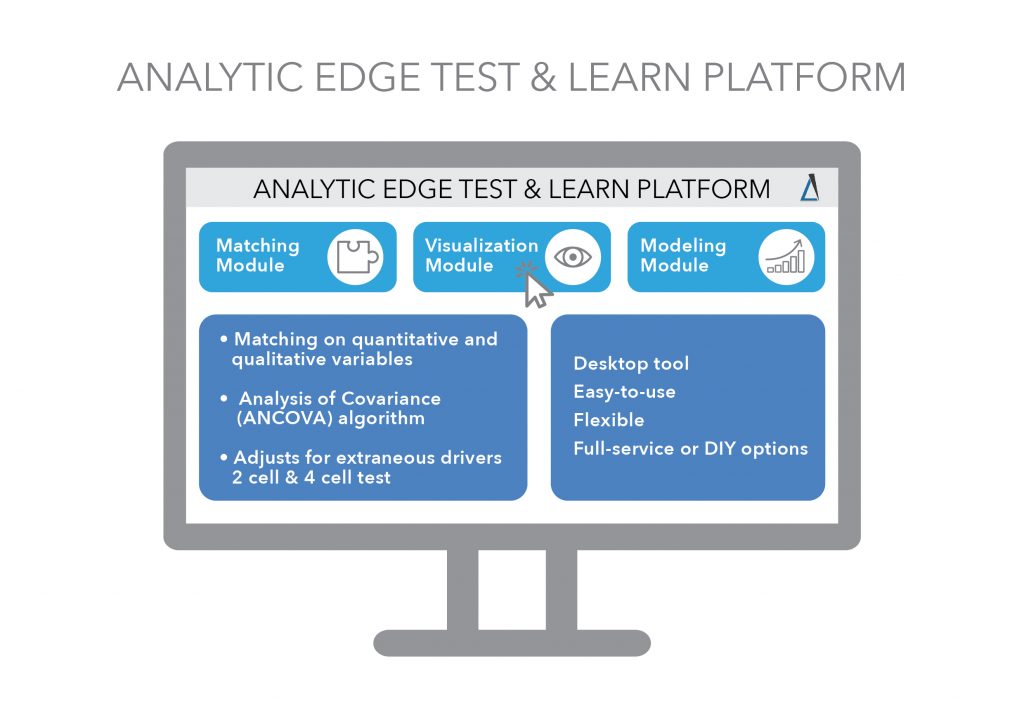Companies must constantly innovate with new products and services, new marketing strategies and tactics, and new communications and messaging in order to address and stay ahead of evolving market conditions, changing customer preferences and competition. These new in-market initiatives such as changes in products, pricing, discounts, merchandizing, channels, marketing creatives and messages have the potential to significantly improve business performance by driving revenues and growth. However, two important considerations must be kept in mind before moving ahead with new initiatives. First, in many organizations, decisions on new marketing initiatives are often captive to internal opinion, intuition or “gut-feel” and may not actually resonate with customers or produce the expected positive results. Second, launching new initiatives in the market, especially if these are region-wide or nation-wide, can be expensive and time-consuming undertakings. In such a situation, how can companies take a more measured, data-driven and lower-risk approach to introducing new initiatives in the market?
In-Market Testing can provide the right answers. In-Market Testing, also known as Test & Learn, gives companies the right tools and techniques to understand the effectiveness of planned marketing initiatives on a smaller and more cost-effective scale, and predicts the likely consumer response and business impact. The resulting data can then be used to make an informed decision on whether to move ahead with the initiative or not.
Some of the important questions that In-Market Testing can help answer are:
- What impact will the initiative have on Key Performance Indicators (KPIs) such as sales, revenues and profits if executed across all markets or customer base?
- Will the planned initiative have a larger impact in some markets or on some customers than others?
- Which components of the initiative or idea are actually working and which are not?
- What will be the impact of new creatives, messages and channels?
While a number of different techniques or methodologies can be used for In-Market Testing, the Matched Store Panel methodology works best to generate a comprehensive analysis of the impact of planned marketing initiatives. This methodology uses advanced algorithms and a simple three step process to match a control panel of stores (or markets) similar to test stores (or markets), and then run tests to quantify the impact of new in-market initiatives. Companies can use the results to make more informed and low-risk decisions on whether to widely roll out the planned initiatives.
Analytic Edge offers companies a ready-to-use, intuitive and customizable desktop tool with modules for Matching, Visualization, Modeling and Reporting to help quickly evaluate the impact of planned initiatives. The tool is designed for Matched Market, Controlled Store and Matched Panel testing and is flexibly designed to allow one-to-one, one-to-many and many-to-many matching algorithms as well as matching on quantitative and qualitative variables. It also has the ability to read impacts at a store level while controlling for extraneous noise, contamination and bias.

With many companies nowadays preferring to run analytics in-house for speed, efficiency and to protect their strategic data, the solution can be offered as a Do-It-Yourself solution with adequate training and support. It can also be offered as a full service solution for those who prefer to outsource Test & Learn analysis.
Test & Learn helps companies avoid expensive mistakes by understanding the probable impact of new initiatives with less risk. To understand and learn more about how your organization can execute effective marketing testing with analytics, write to us here.

